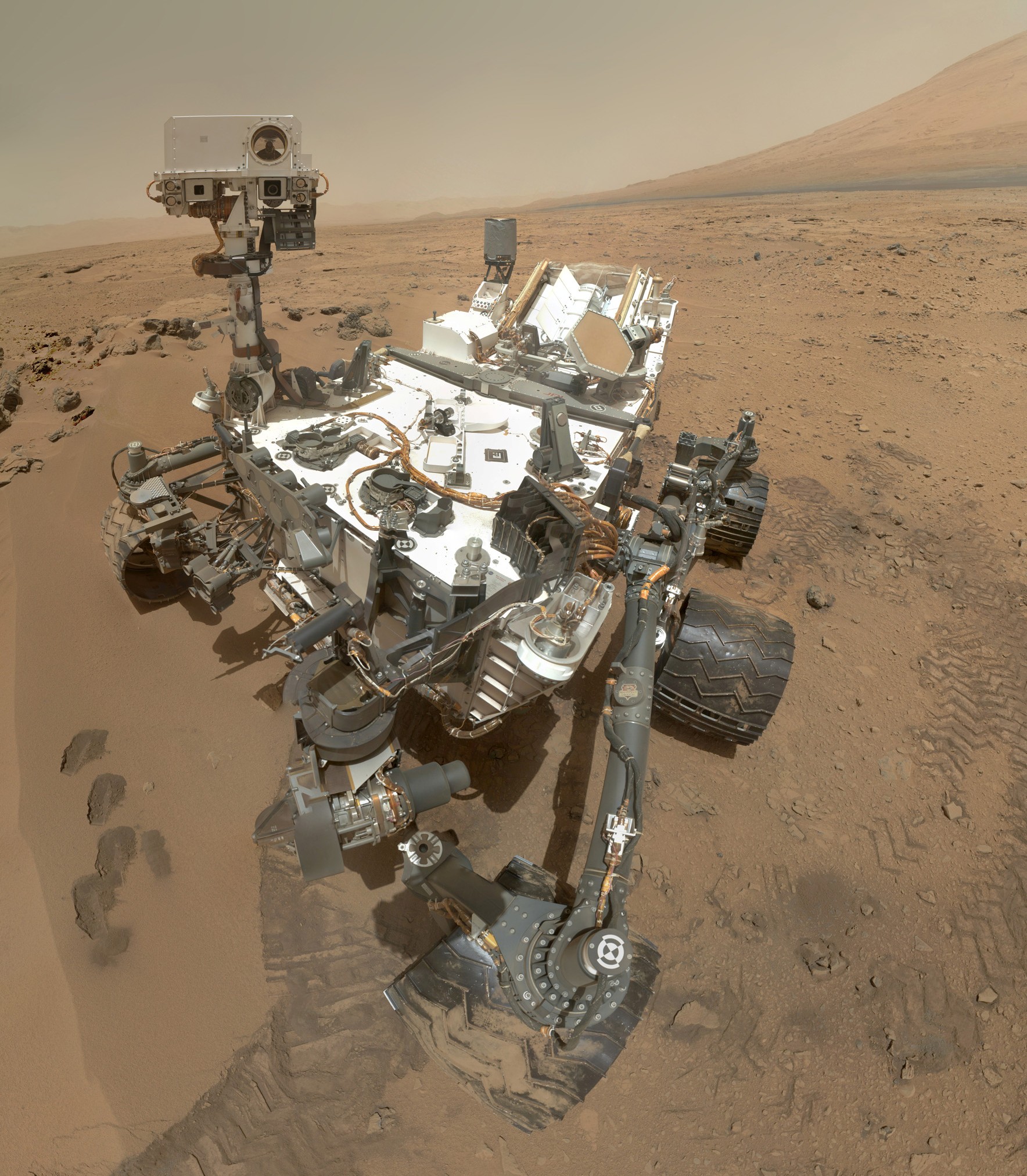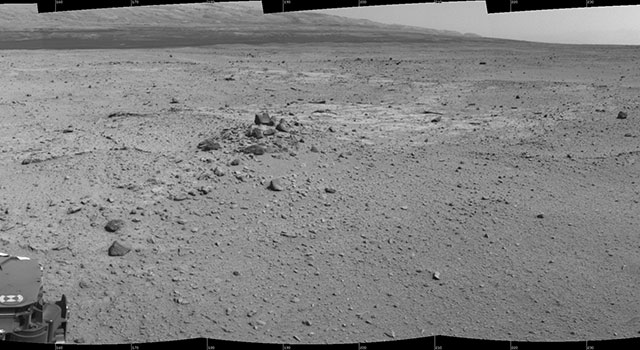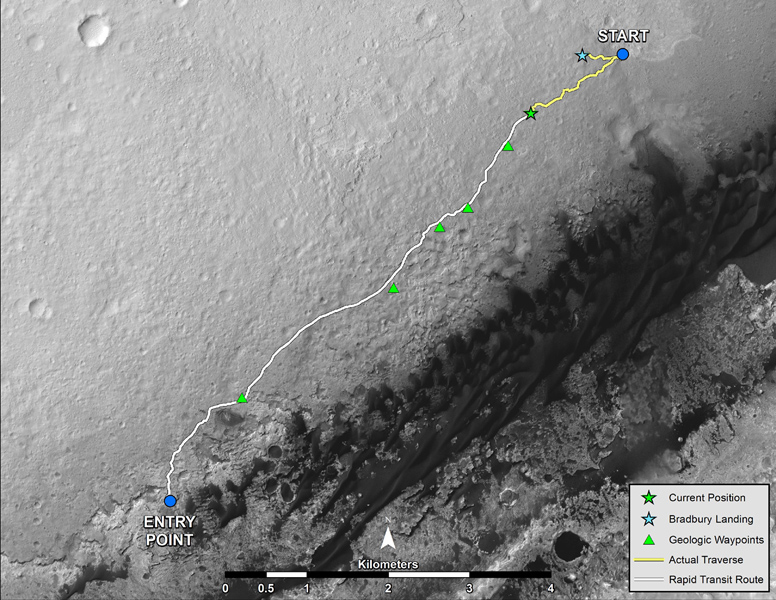In a Navigant Research report published in the last week it forecasts sales of fully autonomous vehicles will grow from 8,000 per year in 2020 to 95.4 million in 2035. Today autonomous vehicles are few and far between. They are legal in California and Nevada and are being tested in the United Kingdom for use on public roads. But you can count the total number on the roads with fingers and toes.
But there is a planet just 55 million kilometers away where there is no restrictions on autonomous vehicles. That is Mars. And right there is one operating there although not on any road engineered by humans.
This week, Curiosity, the NASA rover, navigated for the first time autonomously. No human plotted its drive as it negotiated a section of Martian terrain. The technology it used, known as autonav, took many images using the on board navigation cameras and processed these with its computer to determine the safest route to a destination point. In figuring out the final path it plotted several routes studying all visible hazards and then made its selection.
Curiosity has been on Mars now for more than one Earth year. As of Tuesday it has seen 376 sunrises and sunsets. In the Tuesday drive it traveled 43 meters (141 feet) traversing a depression in the Martian landscape invisible to it human handlers from the vantage point the day before. Curiosity figured out how to get across this area all on its own.
John Wright at the Jet Propulsion Laboratory in Caltech is one of the rover drivers. He may soon find himself reassigned to other tasks if Curiosity continues to show it can navigate on its own. When he was asked about Curiosity’s autonomous drive he stated:
“We could see the area before the dip, and we told the rover where to drive on that part. We could see the ground on the other side, where we designated a point for the rover to end the drive, but Curiosity figured out for herself how to drive the uncharted part in between.”
The image above is a mosaic of navigation camera shots taken by Curiosity after completing the drive. You can see the foot of Mount Sharp in the distance and the . picture almost says “see what I have accomplished all on my own with no dents or scratches.”
Curiosity is not taking a direct line to Mount Sharp as you can see from the proposed route on the image below of the Gale Crater floor. That’s because the Jet Propulsion Laboratory team has given the rover several objectives to visit along the way where it belioeves good science can be conducted. Each of these points is marked with a green triangle and each will have Curiosity stop, look around, do sampling and drilling and use all of the tools in its arsenal. But in between these investigations the rover will largely find its own way point-to-point.
The next destination of interest lies a mere 500 meters (1,640 feet) ahead. At Curiosity’s present pace that means about a 10-day drive. The blue circle marked as the Entry Point seen at the bottom of this image is the point of arrival when Curiosity will have reached the foot of Mount Sharp. Once there the rover will stop and look around before beginning its ascent. And unlike here on Earth it will encounter no oncoming traffic, something autonomous vehicles on the home planet have to deal with every day.
Think about what Curiosity is doing. It is truly an amazing feat of science and technology. We are talking about a robotic device 55 million kilometers away from its designers going about the job of exploring a remote planet on its own in an environment that is more severe than anything encountered here on Earth. Curiosity is doing this with technology at least ten years old because that’s how long it took to build her. So Curiosity’s CPU operates at a mere 132 MHz. The rover has 256 Megabytes of RAM, and a 2 Gigabyte flash drive on board. Let’s do a quick comparison. I’m typing this blog entry on a desktop computer that features a 2.93 GHz processor (22 times faster) with 4 Gigabytes of RAM (almost 16 times more), and twin 1 Terabyte drives (1,000 times more memory although not flash). What would Curiosity be able to accomplish with what I have here at home?
I can’t wait to see what NASA’s next Mars Rover will be able to accomplish knowing how computing technology has progressed since Curiosity was first conceived. The new rover is slated to arrive on Mars around 2020 (subject to budget approval).


















